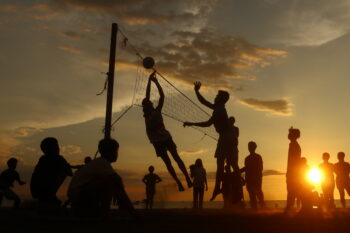
Part 1
BOOK REVEW
BABAYLAN SING BACK: Philippine Shamans and Voice, Gender and Place
Author – Grace Nono
Published by – Southeast Asia Program Publications
An Imprint of Cornell University Press (Ithaca & London)
DAVAO CITY (MindaNews / 23 April) — One of the memorable songs of the critically acclaimed but also highly popular West End and Broadway musical Les Miserables which cannot fail to move the hearts of the audience is the song – Do you Hear the People Sing?
This remarkable song speaks of the aspirations of a poor and downtrodden people for equality, freedom and fraternity. In referring to the people who are some of the poorest and downtrodden among Filipinos today, namely the Lumad or Indigenous Peoples, especially in relation to their shamans who sing their prayers, one could ask: Do you hear the Shamans sing. Or more appropriately – have you ever heard the babaylans sing?
Babaylans are known to constitute various roles in their indigenous communities from sharing authority with chieftains to being the ritual specialists and healers. If given their equivalents today, they would be our teachers, historians, pharmacists, guidance counselors, conflict-management facilitators and spiritual directresses. No wonder, they are referred to as “wisdom-keepers!” Their authority had always been unquestionable which was why during the entire Spanish regime, they could mobilize their people to revolt against the colonizers.
Even until today there are Filipinos who hardly have any idea what is a shaman or who is a babaylan. In the pre-conquest epochs until today, they are known in various names from bailan/baylan (Bukidnon Manobo), ballyan (Mandaya), balian (Tagakolo Mansaka & Subanen), beliyan (Teduray) walian (Arumanen-Livunganen Manobo), walian (Negrito), balyan (Negrito), and mabayan (Gaddang), almo-os (Blaan), loKes (Dulangan Manobo), tau m’tom bu/tu meton bu (Tboli), insup-ok/insupak (Bontoc), pandaniwan (Mangyan), mambunong (Ibaloy), mangilu (Ibanag), mumbaki (Ifugao), magnigput (Ilongot), magnigput (Tinggian), alopogan (Isneg) mandadawak/andadawak (Kalinga), machanitu (Ivatan), and mambunog/mang-gengey (Kankanay).
Even among the Islamized communities there are also shamans including patutunong (Maguindanao), pamomolong/pundarpaan (Maranaw), mangungubat (Tausog) and mangubat (Samal). Among among predominantly lowland Filipinos there were and still are the catalonan (Tagalog), mamalalyah/memalyyan (Pampango), and baglan (Ilokano). It is, of course no surprise given our proximity to the rest of southeast Asia (especially Indonesia and Malaysia) that in those two countries there are also shamans ngadju dyak of the former and dusun of the latter.
On first viewing, it might seem that the country inhabited by Hugo’s Les Miserables – the oppressed people of France at the height of their revolution in the eighteenth century – was a world apart from that of the Indigenous Peoples of the twenty-first century. Their songs would have been different as the former would have mainly sang revolutionary songs while the latter’s repertoire would extend from creation myths to present-day lamentations. But both experience oppression in the hands of an elite hungry for power and would use it to vanquish their struggles for self-determination.
There is no question as to the power of songs. In our country, from the days of the Katipunan through the Marcos’ martial rule and now – in the thick of a political campaign that would determine our country’s future as a free, just and progressive nation-state – the people sang songs of liberty. However, this is just one of the aspect of the songs’ integral value in the cultural life of a people.
It extends to practically all facets of their lives and have always been instrumental in their sustained quest to nourish their cultural legacy while protecting their rights to their ancestral territories. It is in this context that the baylan held a most important location within the space of the ancestral homeland. This also proves how songs – which are thoughts/ideas and desires/aspirations/dreams “spoken” as chants/psalms/songs – have the power to move people to unite and struggle for their full humanity.
Now comes a book that without doubt is one of the most significant to have arisen in the landscape of Philippine literature. Its value encompasses a whole range of scholarly fields: indigenous studies, culture studies, feminism, sociology/theology of religion, linguistics, musicology and pharmacognosy (study of herbal medicine e.g. medicinal plants which are basis for traditional medicine).
On the other hand it carries a whole range of advocacies: the need for the IP people themselves to continue asserting their voices in the public sphere, the need for us non-IP peoples to be in solidarity with them, the need for religions to take a more inculturated view of the richness and value of indigenous belief system and for the world to realize that the key to what would empower us to combat the impact of climate change lies in the wisdom of the IP peoples of the planet earth!
The book is BABAYLAN SING BACK: Philippine Shamans and Voice, Gender and Place by Grace Nono, who hails from Bunawan, Agusan del Sur. Ms. Nono’s name may not ring a bell in the same manner as those of Lea Salonga, Regine Velasquez, Sarah Geronimo or Sharon Cuneta. But more than these songstresses combined – no matter their popularity and level of being celebrities – Ms. Nono contributes much more towards enriching our cultural tradition in music and songs.
For Ms. Nono is not just a “singer” she is a songwriter, performance artist, researcher, scholar, author and advocate for the rights of IPs. And with this book, she proves once more how important an artist who sings can play in pushing our country’s culture towards contributing to making us a truthful, just and sovereign people, anchored in the wisdom of our indigenous sisters and brothers who more than us, lowland Filipinos, have kept our indigenous roots intact.
Considering the historical revisionism that seems to have infected Philippine society with the fake news and disinformation propagated by the troll farms financially backed up by our political powers-that-be both past and present, many of our youth are growing up ignorant about their own history including contemporary events. Thus the timing of this book is perfect for this election session.
So dear reader, take a pause and keep still… for you just might hear the babaylans sing!
[MindaViews is the opinion section of MindaNews. Redemptorist Brother Karl Gaspar is a professor at St. Alphonsus Theological and Mission Institute (SATMI) in Davao City and until recently, a professor of Anthropology at the Ateneo de Davao University. Gaspar is author of several books, including “Manobo Dreams in Arakan: A People’s Struggle to Keep Their Homeland,” which won the National Book Award for social science category in 2012, “Desperately Seeking God’s Saving Action: Yolanda Survivors’ Hope Beyond Heartbreaking Lamentations,” and his latest, “Handumanan (Remembrance): Digging for the Indigenous Wellspring.”. He writes two columns for MindaNews, one in English (A Sojourner’s Views) and the other in Binisaya (Panaw-Lantaw). Gaspar is a Datu Bago 2018 awardee, the highest honor the Davao City government bestows on its constituents.]







